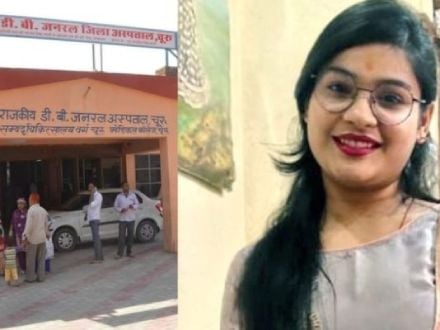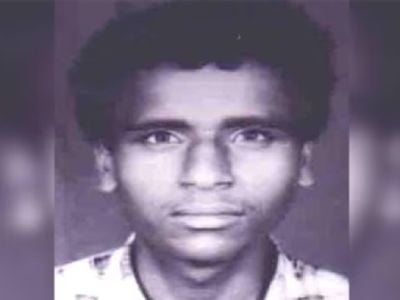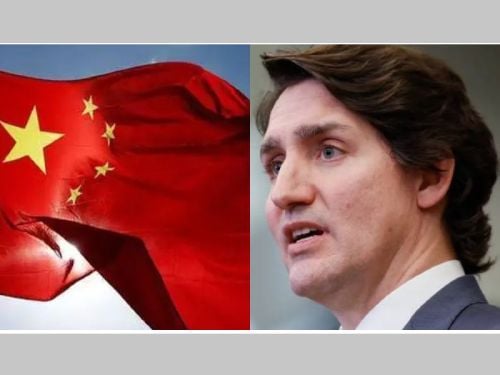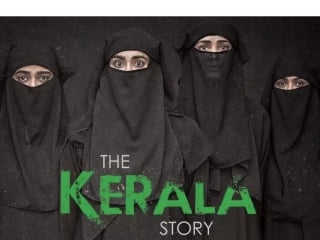Significant scientific research on demonstration and measurement of sonic energy has been carried out in the modern age of advanced technology. This includes pioneering research in the area of ultrasound in USA and Germany. The applications of ultrasonic and infrasonic technology range from strategic weapons to biomedical instruments, from brainwashing to sound therapy and from telecommunications to remote control of the spacecrafts.
The early applications of ultrasound in medicine and surgery had received worldwide publicity. Some reported incidents in this regard include the following: A severe backache of a lawyer in Paris was cured in just five minutes. The late American President Mr. J. F. Kennedy had once suffered from backache and muscular stiffness while he was participating in a tree-plantation programme somewhere in Canada. He was instantly treated by ultrasound therapy by his personal doctor, Dr. Trawell. The physical disabilities of over ninety children, who were suffering from Polio or Arthritis, were cured in Paris by the same therapy. The otherwise ‘permanent’ mole of a patient in Germany was completely removed in a fortnight through regular treatment by ultrasound for a few seconds every day.
The research on sound therapy carried out by Dr. Leislier Lasanio of Vienna has also been significant in terms of investigation into an ancient branch of knowledge through modern scientific means. His experiments on yoga, along with recitation of “ Om ”, have shown very positive effects on a large number of patients in his sanatorium.
The three vowels –– ( a ), –– ( u ) and –– ( m ) involved in Omkara (the omnipresent nada of “ Oam ”) represent, in terms of the power of Ïabda , the three perennial tendencies of Nature and consciousness – sat, raj and tam . The divine powers of the Divine Trinity : Brahma, Vishnu and Shiva – are symbolically represented as the powers of sabda subliminally enfolded in these vowels – to signify the absolute completeness of this the self-existent syllable ( Oam ) and its eternal musical sound ” Oamkara “.
The four Vedas and other Indian scriptures of yore, including the Âyurveda – the ancient medical science – and the Gandharva Veda – the ancient art of music and dancing – are supposed to be the richest sources of knowledge on the perceivable powers of sabda and Nada .
Mantra Cikitsa has been an important branch of ancient Indian Medicine. This is a sublime sound therapy and science of healing of the body and the mind derived from the principles of Mantra Vidya . Even today, the use of this ‘esoteric’ mode of treatment is quite popular – especially in the interior parts of India – for eliminating the poisonous effects of biting by snakes, scorpions, dogs, lizards etc. Mantra therapy is also applied for curing a variety of diseases including jaundice, typhoid, epilepsy, hysteria, etc. An article entitled ‘ sabda Brahma Pratika Mantra ’ is worth mentioning in this context. In this article (c.f . The Hindi digest ‘ Kadambin ’; December’ 1967; p. 18), the author, Shri Govinda Shastri has also described one such incident in detail where he had witnessed a complete and quick (just in two days!) cure of severe jaundice by the mantra cikitsa .
The following quote of Yoga VaïiÌÚha ( shloka no. 6|1|8|1|39) throws light on the power of Mantra Cikitsa :
Yath³ Vireka Kurvanti Harºtakya Swabh³vata¡ |
Bh³van³vaïata¡ K³rya That³ Paralav³daya¡ ||
Meaning: As Harad (a medicinal herb) activates the digestive system by almost instant cleansing of the stomach, the enunciation – accompanied by thorough mental concentration and faith, of the special syllables like ” Ya “, ” Ra “, ” La “, ” Va ” … , of the mantras also create definite effects on the body.
The Caraka Sanhita and the Susruta Sanhita of Âyurveda mention in detail mantra -based therapies against delirium, high fever, asthma, diabetes, jaundice, tuberculosis and some kinds of cardiac-diseases and mental disorders. The Sama Veda focuses upon different methods of composing the rhythms for vedic mantras that play important role in sound therapy. The modes of pronunciation of mantra -syllables and the methods of chanting of the mantras in musical orders – for therapeutic applications – fall into the category of Ïabdika BhaiÌaja . There are four types of BhaiÌajas described in the BhaiÌaja Tantra , a treatise on the ancient Indian medicine and pharmacology. These are categorized as the pawanaukaÌa , jalaukaÌa , vanaukaÌa and ïabdika . The mechanism by which tantra and mantra affect the gross (including the activities at the points of contacts at the tongue, palate and the throat during pronunciations) and the subtle components (e.g. the endocrine glands) of the human body are also discussed in detail in these and related treatises. Each mantra is designed here in a highly specialized manner to generate specific energy and functional potential.
Scientific investigations show that the vibrations produced by large-scaled collective japa or chanting of a mantra collide with the ionosphere and thus affect the geo-magnetism and the Schumann’s resonance. The echo of the reflected vibrations affects the earth’s atmosphere. It is interesting to note that the electromagnetic waves generated by the Schumann’s resonance have the same frequency (around 7 – 13 cycles per sec) as that of the alpha – waves recorded in the EEG of a person performing the japa of the Gayatri Mantra in a state of deep meditation. The suprasonic effects of mantras are said to effectuate – (i) the occult expertise of cursing or blessing respectively, to cause or cure the physical and psychological ailments / disabilities; and (ii) the tantrika means of influencing one’s body and mind by maraña , mohana , uccatana , a bhica ra , katyaghata …., etc. These should be analyzed along the lines of the electromagnetic manifestations – which have a direct bearing upon the functioning of the brain – of the japa – sadhana of the selected mantras .
Another stream of sabda with enormous potential in sound therapy deals with its melodious form indwelling in music. The soothing effects of sonorous music in giving instant relief from mental tension and in curing some psychological disorders are well known. More importantly, the tala (rhythm) and swara (accent or basic note) of the musical patterns offer a wide spectrum of compositions which could be designed for curing or controlling specific hormonal disorders and associated physiological and mental aberrations.
The Indian classical music is rich in a variety of such compositions ( ragas ) that could be made more effective if played along with the strong accomplishment of classical instruments like – sitara , viña , tabala , mrudanga , or tanapura . Six ancient ragas (tunes/compositions) of the Indian classical music have been mentioned in the Gandharva Veda ; namely, the – Ïrº R³ga , Bhairava Raga , Hindola Raga , Malkaunsa Raga , Vihara Raga and the Megha Raga . About five to six varieties or subclasses of these ragas are also considered to be of great importance. The ancient musicians have also devised several other compositions by specific combinations of these ragas . The modes, moods and timings associated with the applications of such compilations are also described in the shastras . The Gandharva Veda cites –
Japadi AÌtaguñama Dhyanadi Dhyanadi AÌta Guñam Tapai |
Tapasi AÌta Guñam Gunam Ganata Partaparam ||
The success of the deep impact of the vocal music primarily depends upon the (spiritual) levels of the consciousness of the singer and the audience. This fact should be kept in mind while designing any experiment on the supernatural effects (for instance, the amazing potentials, of the ragas – Deepak, Meghamalhara , Mohan, sankar and Ïrº , as described earlier) of the significant ragas . Several research laboratories around the world – including the Maharshi Gandharva Veda Vidy³ Pºtha and the Brah® Varchas Research Center , Shantikunj, Hardwar in India – are engaged in conducting experiments to analyze the effects of the rhythmic chanting of some veda-mantras upon human body and mind. It is quite likely that the audio disks and cassettes of the ‘ Vaidik Hymns in different r³gas ’ would become integral parts of the health support systems in the sanatoriums and intensive care units of the future.
How the musical sound would affect a disorderly (diseased) state is explained in detail in the ancient scriptures. The basic principles of Âyurveda have emerged from the concept of defining/ classifying a human body’s system in terms of three basic natural properties – v³ta , pitta and kapha . Corresponding to the characteristic features of these three tendencies, there is a mention in the Gandharva Veda about their respective musical properties viz. , samyak t³rat³ of v³ta , samyak tºvrat³ of pitta and samyak m³dhurya of kapha .
As v³ta , pitta and kapha have a direct bearing upon the intra-body functions that are based on the use of air (e.g. O 2 in oxidation reactions), heat (e.g. in various thermodynamic regulations) and water (e.g. the aqueous medium for bio-molecular binding) respectively, so have their musical analogues – the t³rat³s . The ancient Indian schools of medical sciences had recommended the study of the treatise on music and sound – like the Gandharva Veda , as an integral part of the study of Âyurveda . The expert vaidyas (the Âyurvedic doctors) those days used to have an expertise and practical efficiency in the Indian classical music as well.
Some treatises on relationship between classical music and Âyurveda mention that – Raga Bhairavº is most suitable in curing the diseases caused by the imbalance of kapha ; Raga Malhara Saurat and Jaijaivantº have positive effects in controlling mental instabilities, short-temper, …., etc. The following r³gas are also prescribed as ‘effective remedies’ – Raga Assavari for purification of blood; Raga Bhairavi for eliminating the physical sufferings due to tuberculosis, asthma, chronic cough and some other diseases of the respiratory system; Raga Pancham for treatment of ailments of the liver, stomach and the digestive system; Raga Hindola for increasing and purifying the lymph and serum and strengthening the liver and spleen. Famous examples of related applications include – King Raja Singh’s relief from insomnia through the Raga Puriya , sung by the great singer Baij¿ Bavara ; instant cure of insomnia of the Italian dictator Mussolini by the effects of the classical ragas sung by Pt . Omkaranath Thakur , etc. Similar historical incidences are said to be associated with eminent musicians like Pandit Pulaskar and the Dagar brothers.
Inspired by the impact of ultrasound in medical technology, some modern scientists have also begun to experiment on the power of music in maintaining the normal (healthy) functioning of the body. Some examples cited earlier in connection with the positive effects of sound therapy elucidate encouraging outcome of this research. Significant experiments on use of music as a promising therapy have also been conducted at the center established by Dr. Ralf Lawrence Hoy in Pittsburgh. Dr. Podolsky and Dr. Berner Macfeden also make use of sound-therapy for effective treatment of their patients.
A collaborative research between modern medical science and ancient sciences of mantra vijóan and classical music would offer more fruitful applications of the vital power of sabda in improving the praña (natural vital energy) levels. This would mark a definite step towards holistic healthcare.
Source : AWGP

 Rajasthan: Woman found hanging at a beauty parlour, Arshad, 3 others booked
Rajasthan: Woman found hanging at a beauty parlour, Arshad, 3 others booked Chhattisgarh: Naxal top commander along with 28 other Naxals killed in a joint operation
Chhattisgarh: Naxal top commander along with 28 other Naxals killed in a joint operation Andhra Pradesh: Farooq kills mentally challenged Hindu man for insurance money
Andhra Pradesh: Farooq kills mentally challenged Hindu man for insurance money 2 ISIS terrorists arrested in Germany for sexual abuse of minor Yazidi children
2 ISIS terrorists arrested in Germany for sexual abuse of minor Yazidi children China, not India, interfered in 2019 and 2021 Canada elections, says Canadian panel
China, not India, interfered in 2019 and 2021 Canada elections, says Canadian panel After Idukki diocese, Syro Malabar Catholic Church’s Thamarassery diocese screens ‘The Kerala Story’
After Idukki diocese, Syro Malabar Catholic Church’s Thamarassery diocese screens ‘The Kerala Story’